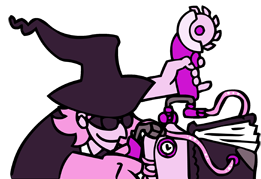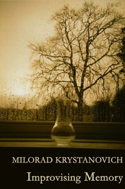reviewed by the Judge
A collection with some interesting ideas behind it, but limited in its scope and execution -->
Perhaps there is no theme more commonly explored in contemporary poetry than language and the problems of language itself. So it is at once unsettling and refreshing to encounter a collection where the fulcrum of meaning rests on the question of the image and not on that of the word. Milorad Krystanovich is a photographer as well as a poet, and he explores the image and its meaning with the same diligence and enthusiasm with which so many modern poets dedicate their energy to the truth(s) surrounding reading, writing, and the Word. The results, at the threshold, are intriguing.
As far as themes and ideas go, there is plenty of meat on the roast.
A popular trope in discussions of language is silence and the relationship of truth to silence. Similarly, Krystanovich displays evident interest in the relationship between the truth of visible signs and that of the 'blank' (a word which recalls the state of a photograph before it is developed). As he writes in the opening poem of the collection, 'Telepathic Relief', "The poem could reduce the white of blankness / from the page as the lines cover / the blank meaning of the sheet itself." This thematic duality is established from the outset and sustained throughout. Frequently it is suggested that there is more to be learnt by the absence than by the presence of signs, echoing the old theme of silence versus words:
You are only there to feed
the migratory guest
in the city, but are not able
To decipher the codes of the attempt.
The ice is their lecturer of the season.
But looking at the pale scene
they see only the plot of lilies.
(Two Pretenders)
Emphasis falls continuallly on the separation of two inter-medium poles - observer and observed, agent and object, speaker and addressee, and, with the greatest richness of representation, image and blank. The dichotomy has been mined before, but not quite in these terms. When Krystanovich writes, in 'Non-Communicators', of ...
... two absent singers:
they speak no language of things
but the pane talks to them
through its tongue of transparency.
... he is unwittingly describing his own poetics. These poems really 'speak no language of things', concentrating instead on a 'tongue of transparency' (a paradoxical communicator the double nature of which is perhaps more clearly phrased in 'Love Collocation': "Exhibitions are their goal, constantly"). As he concludes in 'Into the Reflection', "... the form cannot / escape from the looking-glass - / love remains as it was, is and will be." Spatio-temporal categories collapse into the monadic quality of the image, rather than the sign. The originality of this detail should not be overlooked.
As the collection progresses, these premises are brought to bear on a number of interesting themes, first on subjectivity, then on interpersonal relations, and, later on, on the active role and nature of simulacrums, instead of their relation with their real objects of representation (particularly in the challenging and rewarding central section, 'Future Forgotten'). The need to keep the monad/image pure in order to preserve its truth-value is determined by the fact that we contaminate what we see (or touch, or study, or act, or reflect upon): "... he stares at the sawdust - / the first sign of the morning's entrance." ('Hibernation Cushion'). It is sawdust, a form of natural debris, which heralds the arrival of 'morning'. Krystanovich is aware of the destructive power of 'light', and the fact that what we call illumination corresponds to a destruction of the truths of darkness. It may be for this reason that he seems to portray the object of the art of photography as being 'to collect the scattered details of life' ('Magic Lantern'). It is in these fragmentary remains that Krystanovich conducts his search, bringing to light some of his most interesting discoveries, including a hidden and somewhat disquieting version of the self which subsists (again) inbetween two imagistic poles:
Between eyes and mirrors
there are no reborn flowers
but the double silhouettes -
his and hers,
the host and her guest
in the palace monologue of self.
(Grasping for the Surface)
As far as themes and ideas go, then, there is plenty of meat on the roast. So it is all the more unfortunate that the technical execution should come so short of the volume's aspirations. Improvising Memory is full of interesting ideas, but it is also plagued with a number of basic issues and as a result the collection ultimately falls flat. The imagery, for instance, is marred by a monotone insistence on Romantic or neo-Romantic signifiers. Words like 'light', 'air', 'sky', 'emptiness', 'night', 'love' and 'sleep' are thrown at the reader with such relentlessness that they become overbearing, and the eye of the mind starts groping for something more concrete on which to rest. Granted, they are all classical poetic themes, but precisely for this reason they should be used with caution. Here they are abused.
No less importantly, Krystanovich seems to struggle with some basic components of language, like adverbs and conjunctions. The use of 'but', for instance, implies a conflict or contradiction of some sort between the two parts of the sentences it connects. Yet if Krystanovich writes in 'Now' that "now is never the adverb / of past-time, but two equals two / while two handfuls of clay / slide into his pockets", one wonders what the conjunction is doing there - how is 'now' never being 'the adverb of past time' in any way conflictual with 'two equals two'? It is an oddity which reappears in several other places ("Today, sunlight is still ancient / but the woman's heart / is not at ease." - Future Forgotten). These may be intended for rhetorical or metaphorical effect, but they appear so often that the language inevitably ends up feeling imprecise, if not solecistic. "[E]ach circle enlarges its volume," we are told in 'Fading Darkroom Prints'. Yes, but a circle does not have a volume, it has an area. Or, consider the lines in 'Sleep Advantage': "After the dream, / night is still between two days." When used as an adverb, the word 'still' generally implies constancy in spite of the previous object of the sentence. But how does its being 'after the dream' somehow imply that night should not be 'between two days' (and as opposed to what, anyway)? It's simply a very puzzling use of an unrequired adverb. And speaking of puzzling uses of language, this is how the poem continues: "... there are two daylights - / yesterday's and tomorrow's metaphor / of the utopia reality cannot / substitute for poetic justice." If you can wrap your brain around that one, you deserve a medal.
The issue of clarity does come up on occasion, but more as a corollary to the limitations of Krystanovich's technique. He seems to have little more in his sleeve to compose a poem than simply listing a number of interestingly described images. Most of his poems are just that - one or more small frescoes of some place or situation, with agency sometimes given to inanimate objects. Sometimes the connection between the successive images presented to the reader is feeble, and as a result, it becomes hard to follow the poem. The best works in this collection are generally those which veer away from this standard 'image-listing' technique and introduce new and interesting voices (the use of italics to indicate a sort of dialogue, for example), or those which formulate their topics clearly and can be followed more smoothly. At those times, the poems prove pleasing and original. Elsewhere, though, the technique stumbles on its own insistence, and the collection sags somewhere halfway through as the structures and techniques of the poems begin repeating themselves. I commended the line, "the form cannot / escape from the looking-glass" as an effective and interesting turn of phrase, and I stand by that statement. However, when you go on to read that "the streetlights cannot turn / their cones upside down", (Inside Out-Casting), "a face cannot react / with other faces", (Escaping Emptiness), "That house behind sunset / cannot face nightfall", (Spirit Maturation), "the small garden fountain cannot / pretend to be their friend", (Degree of Vacuum), "the underwater bird cannot / break the surface of the winter cage", (Crestfallen Diver), "the picture of the poem-bearer in the lane cannot / be healed by the cone of light", (Blanketed), "the sea cannot reach the doorstep", (Holiday House), and more, you begin to feel that, well, perhaps the horse has been beaten. These poems do offer a measure of reward for those willing to take the time to re-connect Krystanovich's enucleated images, but only too often these rewards are not commensurate to the effort they demand, and combined with some technical deficiencies too glaring to overlook, they make for a poetry collection which grows old faster than it grows fond.










